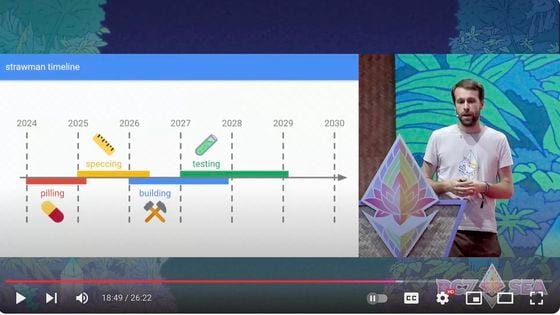
What's good for the L1 is good for the L2s.
That's the assessment the teams behind zkSync and Polygon, two of the leading layer-2 networks running on top of Ethereum, gave of a recent proposal to overhaul the $400 billion blockchain, dismissing suggestions it would make their auxiliary networks redundant.
Last week, at the biennial Devcon gathering in Bangkok, Thailand, developer Justin Drake laid out an ambitious plan to revamp Ethereum’s consensus layer architecture. As part of that plan, which has come to be known as the “Beam Chain," Drake suggested incorporating zero-knowledge cryptography, which several L2s use to compress data in order to make transactions faster and cheaper, into the Ethereum protocol.
Over the past few years, many in the Ethereum ecosystem have pushed a rollup-centric roadmap, meaning they would rely on layer-2 networks to overcome Ethereum’s scaling challenges. Zero-knowledge rollups specifically were seen as the superior technology because they have advantages over so-called optimistic rollups in terms of speed and security.
Ahead of Drake’s Devcon talk, many were left wondering what the Beam Chain would mean for the zero-knowledge rollups on Ethereum, and whether they would become obsolete.
“That's really a misconception,” said Alex Gluchowski, the CEO of Matter Labs, the developer firm behind zkSync. “The changes that Justin announced are focused on the consensus layer, not on the execution layer. It's not going to affect the execution layer.”
Ethereum, the base layer, is itself made up of several layers. The consensus layer is responsible for ensuring that blocks are validated, while the execution layer is in charge of executing transactions. Layer-2s, which post their transaction data back to Ethereum, are mostly affected by changes on the execution layer.
In addition to incorporating ZK, Drake's proposal seeks to shorten block times, which could cut transaction costs for L2s settling on Ethereum. Drake also said he wants to introduce single-slot finality, meaning blocks with transaction data could be finalized immediately, and that information would become permanent right away. If all goes as envisioned, the Beam Chain would go live in 2029 (although Ethereum has a history of delaying ambitious technical upgrades.)
“All of those things are great because we depend on Ethereum as the global settlement layer,” Gluchowski said.

Brendan Farmer, a co-founder at Polygon, also told CoinDesk he doesn’t think the Beam Chain would obsolesce layer-2s. Instead, he said, the upgrade would “make rollups work better.”
“Shorter block times, faster finality, ZK verifiability of what's happening on the consensus layer – those are things that I think have a really positive impact for L2 usability and for L2 interoperability between different ecosystems,” Farmer said.
Faster finality on Ethereum would be especially useful for making layer-2s interoperable, a widely shared goal for scaling networks.
“A big problem with Ethereum right now is that for a block to be considered finalized, it generally takes 12 to 19 minutes,” Farmer said. “If you're moving funds between like Arbitrum and Polygon: until that transaction has been withdrawn from Arbitrum and deposited to Polygon, Polygon can't safely credit those funds to a user until that transaction has been finalized on the L1. So that just leads to a bad user-experience, whereas if you have 12-second finality, that becomes a better user experience.”
Gluchowski of Matter Labs called the Beam Chain a vindication of zero-knowledge proofs as a scaling method.
“Using ZK really emphasizes the fact that ZK is the end game,” he said.
Read more: Top Ethereum Researcher's Dramatic Proposal Draws Standing-Room-Only Crowd in Bangkok
免责声明:本文章仅代表作者个人观点,不代表本平台的立场和观点。本文章仅供信息分享,不构成对任何人的任何投资建议。用户与作者之间的任何争议,与本平台无关。如网页中刊载的文章或图片涉及侵权,请提供相关的权利证明和身份证明发送邮件到support@aicoin.com,本平台相关工作人员将会进行核查。




